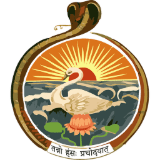Direct Disciples
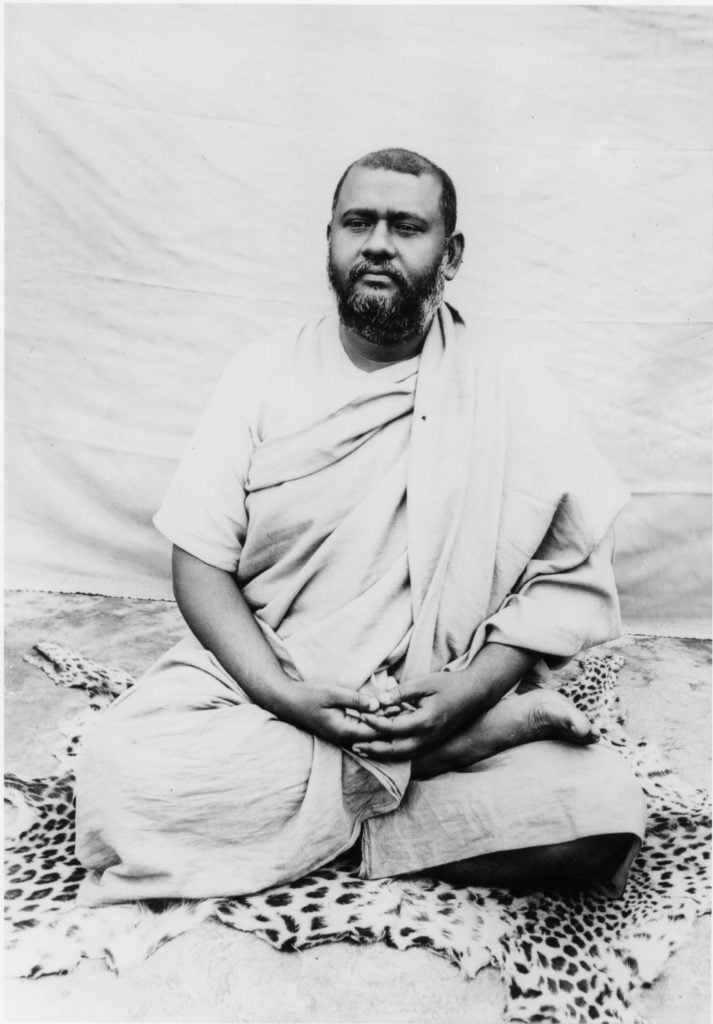
Swami Brahmananda(1863-1922)
Swami Brahmananda, the `Spiritual Son' of Sri Ramakrishna was the first president of the Ramakrishna Order. Known as Rakhal Chandra Ghosh in his premonastic days, he was born at Sikra, a village near Calcutta, on the 21st January 1863, of aristocratic parents. During the High School days of Calcutta he came into contact with Narendranath ( Swami Vivekananda ) which developed into an intimate lifelong friendship.Even from his child hood days he was given to devotional moods bordering on mysticism, which naturally led to indifference to studies His father got him married at an early age to ward off the religious pursuits from his mind and fix him up in the world. Strange to say, this very tie of marriage brought him to Sri Ramakrishna who at once recognized in him his `spiritual Son' as per the vision vouchsafed to him by the Divine Mother. Thus started a course of spiritual intimacy and intensive training under the loving care of the Guru, which resulted in several exalted mystic moods and spiritual experiences. After the passing away of Sri Ramakrishna, Rakhal , along with Narendra and other brother-disciples, embraced monastic life under the name `Swami Brahmananda.' He spent several years as a wandering monk, visiting places of pilgrimage and practicing severe austerities.
A little before the return of Swami Vivekananda from the West, he came back to the Baranagore Math and started living there. After his return and establishing the Ramakrishna Mission, Swami Vivekananda made over the responsibility of running the organization, to him remembering that Sri Ramakrishna had once remarked that Rakhal had the capacity to rule a kingdom. His uncanny sense in solving even knotty problem and spiritual eminence of Himalayan heights took the organization to new levels of glory and development. It was a long stewardship marked by work and worship remarkably blended together. During his tenure as the Head, he also guided many earnest spiritual seekers by taking them under his protection, thus fulfilling Swami Vivekananda's prophetic remark that Swami Brahmananda was veritably a spiritual dynamo. He passed away on 10th April 1922.
Teachings
- Initiation into a mantra helps concentration of mind; otherwise your mind will change and fluctuate.
- The mind is susceptible to suggestions. It learns whatever you teach it. If through discrimination you can impress upon it the joy and fullness of life in the spirit and the folly of worldly attachments, then your mind will devote itself more and more to God.
- The way of steadying and purifying the mind is to retire into solitude, control all cravings and engage yourself in contemplation and meditation.
- Work and worship must go hand in hand. Why are you afraid of work? Work for Him. You can overcome all disinclination for work if you consider it as dedication to God.
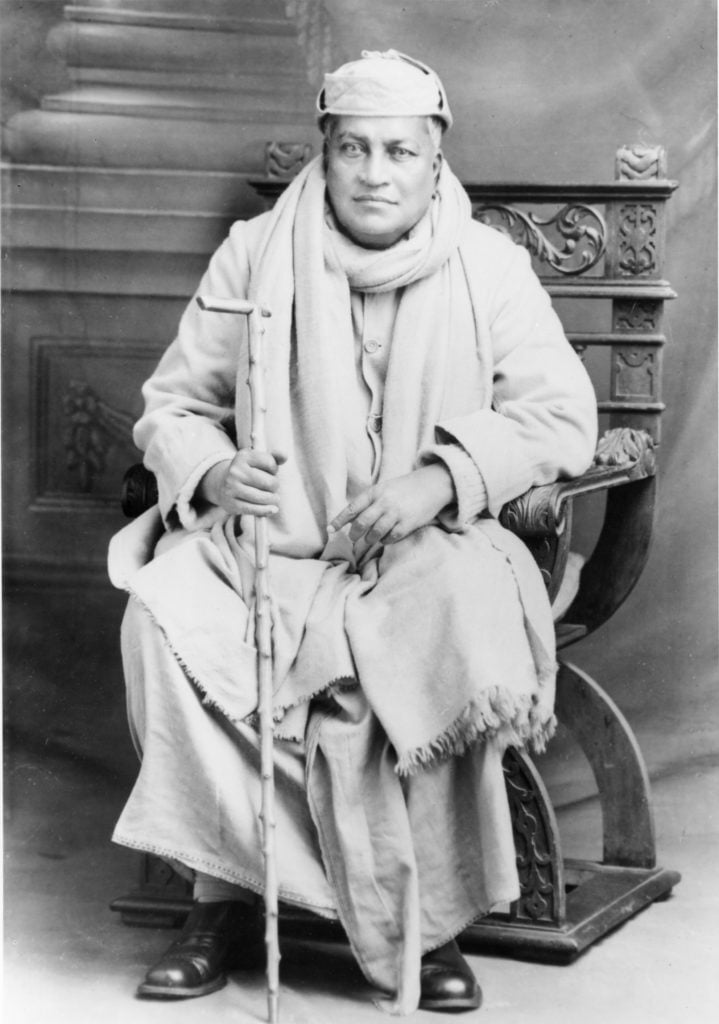
Swami Shivananda (1854-1934)
Swami Shivananda, the second president of the Ramakrishna Order, was popularly known as Mahapurush Maharaj'.Born probably in 1854 at Barasat of West Bengal, in a respectable and deeply religious family, Tarak -- that was his original name -- got a good education, both secular and spiritual. When he was working in Calcutta in an English Firm, he got an opportunity of seeing Sri Ramakrishna about whom he had already heard. Later, when he met Sri Ramakrishna at Dakshineswar, the latter was pleasantly surprised to learn that he was the son of Ramkanai Ghosal, his old friend. Needles to say that Tarak had the full approval of his father for becoming a disciple of Sri Ramakrishna. Tarak was the first person to join the monastery at Baranagore after the demise of the Master, and was christened `Swami Shivananda' while receiving the monastic orders. Though Tarak had been married, he had successfully kept up the vow of brahmacharya (celibacy). This made Swami Vivekananda remark in later days that he was a `Mahapurush.' This name stuck and he became known as `Mahapurush Maharaj.' Like his brother-disciples, he also spent a few years as an itinerant monk. But he had to settle down at the monastery in 1897 after the triumphant return of Swami Vivekananda from the West. Fro some time he was in Ceylon (Sri Lanka) also, preaching Vedanta at the behest of Swami Vivekananda. He also took a leading part in the first plague relief work of the Ramakrishna Mission in 1899. It was he who started the Ashrama at Varanasi. But the most memorable part of his life was during his stewardship of the Ramakrishna Organizations as the president from 1922 to 1934, when he blessed a large number of people with initiation and brought spiritual solace and comfort to thousands of devotees. He passed away on the 20th February 1934 after a protracted illness which, never alienated him from his Lord whose presence he was constantly aware of. He was was one of the finest examples of the fact that the beauty and sublimity of the inner life of a holy man can never be described in words but can only be tangibly felt.
Teachings
- Low thoughts will come and go. Don't mind them. Through His grace, as a result of constant practice you will get strength. Devote your whole mind to japa, meditation, worship and the study of the scriptures, whichever appeals to you for the time being.
- Mere mechanical japa does not help much. You must have love for the Lord. But then, even mechanical japa has some results; after all it is Lord's name that is being repeated.
- Pray to the Lord for strength, knowledge and dispassion. Pray to Him with all your heart for His grace and for devotion and faith. It is not possible for everyone to practise hard austerities, but then, through prayer everything is attained.
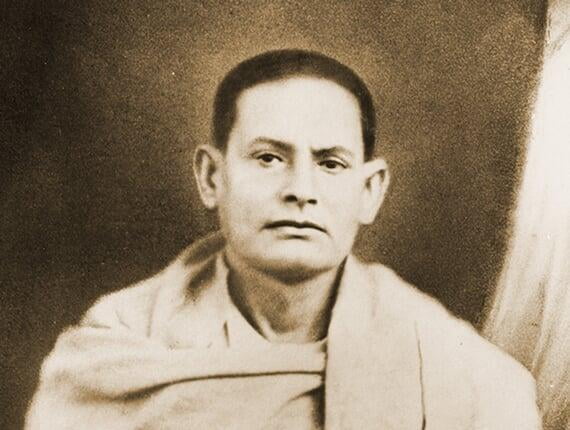
Swami Premananda (1861-1918)
The name `Swami Premananda' given to Baburam by Swami Vivekananda at the time of accepting the monastic orders, was a true reflection of his basic trait universal love. Born to affluent parents on December 10, 1861, Baburam completed his early schooling in his village of Antpur (Bengal), came to Calcutta for higher education and joined the Metropolitan Institution. There he had the privilege of having Sri `M' ( Mahendranath Gupta ), the celebrated author of The Gospel of Sri Ramakrishna as his Headmaster and Rakhal ( Swami Brahmananda) as his class-mate. It was the latter who was instrumental in taking Baburam to Sri Ramakrishna. Sri Ramakrishna examined Baburam's features in his own, rather queer, way and was satisfied about his high spiritual potentialities. Increased contacts with Sri Ramakrishna intensified Baburam's inherent spiritual thirst which had been manifesting itself even from his childhood. After the passing away of Sri Ramakrishna, Baburam, along with his brother-disciples like Narendranath ( Swami Vivekananda ) and Rakhal embrace the monastic life, becoming `Swami Premananda.' He spent most of his life in the monasteries at Baranagore, Alambazar and Belur taking care of worship, internal management and training of the new monastic recruits. His innate motherly love endeared him to one and all. Many a young man was reformed by his golden touch. During his later sojourn in several parts of Bengal, especially in East Bengal ( present Bangladesh ), he inspired the youth to be useful to the society by voluntary service. Though a man of high spiritual attainments, he was wont to hiding them and very reticent in giving expression to them. The deadly disease of Kala Azar took him on the 30th July 1918.
Teachings
- To follow the Master means to practise what he taught; otherwise nobody can advance by just offering to him a few flowers or through some momentary sentimental outbursts.
- Can one become a great devotee of God simply by dancing and jumping or by quoting plentifully from the scriptures? What is wanted is freedom from selfishness - freedom from egotism... Mere talk will not do, this is an age of action.
- Not mere theory; actualize it - there has been enough talk and writing. Put the books aside and let your actions speak. This is what the lives of the Master and Swamiji stand for.
- The poor, the weak, the fallen, the ignorant - all these you have to make your own. And yet I warn you, that in loving one section of society you must not become hateful of the other, the rich.

Swami Yogananda (1861-1899)
Though counted among the disciples of Sri Ramakrishna and guided by him, Swami Yogananda was the first initiated disciple of Sri Sarada Devi, popularly known as the `Holy Mother.'Like the Mother whom he served meticulously with matchless devotion, his life was very unobtrusive for all outward appearances but very deep in inner mystic experiences, of which he sometimes gave a hint or two. Born in 1861 in an orthodox Brahmin family which was in indigent circumstances but had once been aristocratic and rich, Yogindra - the premonastic name of the Swami - was by nature indrawn, gentle and shy. The desire to pluck a nice flower in Dakshineswar garden brought him face to face with Sri Ramakrishna whom Yogin mistook for gardener working there! He got the flower all right, but in the process, himself became a `flower plant' to be tended by a great gardener of lives. Though married, the world could never drag his mind down to worldliness. Just as pure gold cannot be shaped into ornaments but has got to be alloyed with a small quantity of other metals, Sri Ramakrishna had to `alloy' him with a bit of harshness to counter his too gentle a personality that could not last in this mundane world. But the disciple was not a goody goody simpleton. He could exercise his highly critical discernment even against his own guru or leader ( Swami Vivekananda ) when he thought it necessary. He was a good organizer. He had successfully attracted and inspired many a young man to the monastic life. He was extraordinarily devoted to the Holy Mother whom he served till the last day of his life. His congenitally frail constitution could not stand the rigors he chose to impose upon himself resulting in a rather premature death on March 28, 1899.
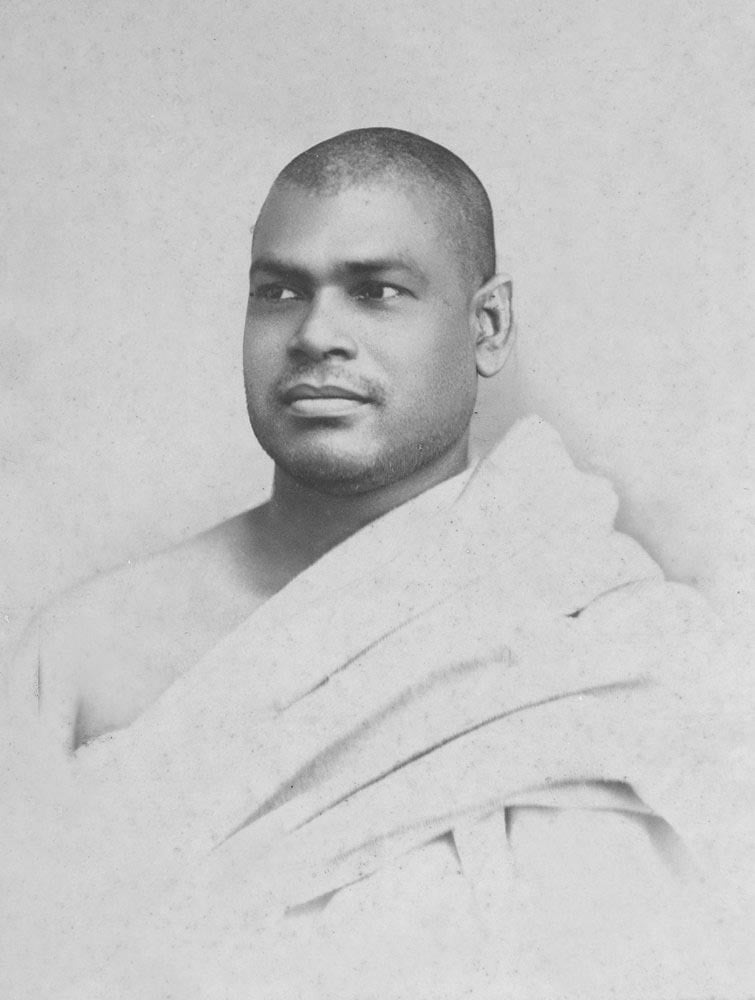
Swami Ramakrishnananda (1863-1911)
It is said that Swami Vivekananda at the time of sannyasa wanted to take the name of `Ramakrishnananda' for himself, but gave it up in favor of Shashibhushan, who, he thought, deserved it best. And, Shashi deserved it eminently by dint of his devoted service to Sri Ramakrishna especially during his last days. The way he served Sri Ramakrishna when he was alive and the way he carried on his worship through relics after his Mahasamadhi were, to say the least, exemplary.Born on the 13th July 1863 -- the same year as Vivekananda -- in an orthodox Brahmin family of the Hoogly district of Bengal. Shashi got a good education and an excellent training during the early years which laid the foundation for a lofty character. His very first visit -- along with his cousin Sharat ( Swami Saradananda) -- to Sri Ramakrishna forged strong links with him, whom he accepted as the pole-star of his life.
During the last illness of the Maser, Shashi toiled say and night to serve him and to lookto his comforts. After his demise, when the relics were gathered and established in the shrine of the maiden monastery at Baranagore, it was Shashi who took upon himself the responsibility of worshiping it as also take care his monastic brothers who had been fired by an intense spirit of renunciation. No mother would have served her children with greater feeling and care than Shashi cared for them. At the behest of Swami Vivekananda, Shashi -- now Swami Ramakrishnananda -- came down to Madras to start a monastery there. By his austere life, devoted service and immense scholarship he was able to put the monastery on a solid foundation though he had often to pass through fiery ordeals. It was he who kindled the interest of the people in the then princely State of Mysore, in the teachings of Sri Ramakrishna and eventually start a Math at Bangalore also. The Swami was a combination of intellectual scholarship of the highest level and devotion of the deepest type. In spite of all his stern external discipline, he possessed a soft and motherly heart. The hard incessant work he did to consolidate the work of the Math at Madras broke even his massive frame. He left the mortal coil on the 21st August 1911.
Teachings
- What kind of devotion takes us to God? The child's devotion to the mother. Why does the baby go to the mother? Because it has reasoned out that the mother is the best friend it has. And why do you go to God? Because you have previously reasoned out that God will help you and no one else can. So, as the baby goes to the mother, you will go to God.
- So long as we have no ideal to follow, we will have to heed the calls of our lower nature. A characterless man is slave to all worldly enjoyments.
- You have been worshiping this god of your body for so many lives; it is not easy to begin worship the true God all at once. It you would raise you Self, you must crucify the body and conquer the senses.

Swami Niranjanananda (d-1904)
Nityaniranjan Ghosh, more commonly known as Niranjan, was probably born in village Rajahat-Vishnupur ( Bengal), but lived in Calcutta with his uncle. Physically well-built and majestic in appearance, he had somehow become associated with a group of spiritualists who has found in him a very good medium. Having heard about the great spiritual power of Sri Ramakrishna, Niranjan came to Dakshineswar one day.During this very first visit, the great Master told him, `My boy! If you think of ghosts and spooks, ghost and spook will you become! But if you think of God, divine will be your life. Which do you prefer ?' And this converted him from spiritualism to spiritual life. Though frank and open-hearted, he was subject to loosing temper and consequently all sense of proportions.
Sri Ramakrishna took special care to help him overcome this weakness. Niranjan was one of the few who served the Master day and night during his illness. After his demise he took sannyasa along with others and became `Swami Niranjananda'. He was mainly instrumental in getting the major portion of the ashes of Sri Ramakrishna, to be later interred at the new Math built by Swami Vivekananda. He has a deep devotion for the Holy Mother. Though tender at heart, he could be fiercely stern in the face of hypocrisy. He breathed his last on the 9th may 1904.
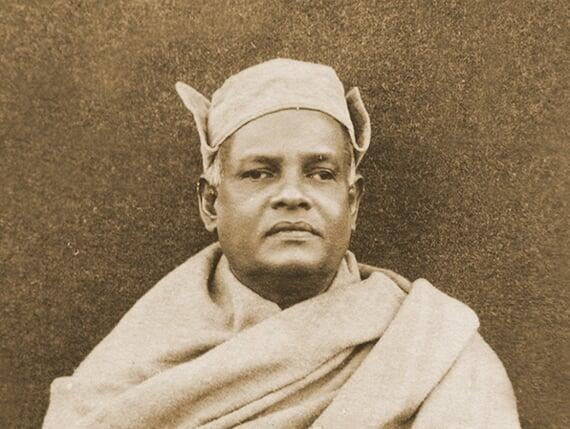
Swami Sardananda (1865-1927)
While in ecstasy Sri Ramakrishna's behavior would often be mysterious. One day in such a mood, he sat on the lap of a young man, Sharat Chandra by name, and remarked, 'I was testing how much weight he could bear'. This Sharat Chandra who was later known as `Swami Saradananda' successfully bore the burden of running Sri Ramakrishna Math and Mission as its (General) Secretary for nearly three decades.Sharat Chandra Chakravarti (b. 23rd December 1865) was born at Calcutta in a rich and orthodox Brahmin family. He and Shashi, who later became Swami Ramakrishnananda, were not only cousins and family friends but also studied together at the Metropolitan College of Calcutta.
The first contact of the two cousins with Sri Ramakrishna during October 1883 -- was a turning point in their lives. Friendship with Narendranath (Swami Vivekananda) gave a further fillup to their spiritual and monastic aspirations. Sharat,who was an adept in serving the sick, both by temperament and by experience, was one of the few important disciples of Sri Ramakrishna who nursed him during his fatal illness. After his passing away, Sharat too joined the select band of monastics under the leadership of Narendra and became `Swami Saradananda'. Like his other monastic brothers, Swami Saradananda also spent a few years as an itinerant monk practising severe austerities. However, when Swami Vivekananda called him for continuing his work in the West, Saradananda went to London first and later to New York for the same. While he was proving to be a great success in the West, especially due to his spiritual attainments, he was recalled to India in 1898 by Swami Vivekananda to take over the executive responsibility of the Sri Ramakrishna Math and Mission as its (General) Secretary in which capacity he served till his last day.
The way he served Sri Sarada Devi, the Holy Mother, was a model par excellence for anyone to emulate, In order to build a residence for her at Calcutta which would also house the office of the Udbodhan, the Bengali Monthly of the Ramakrishna Order, he labored hard. To repay the debts he had incurred in doing so, he wrote the now monumental work Sri Ramakrishna Lilaprasanga (`Sri Ramakrishna, the Great Master'). The Swami was as learned as he was spiritual. His courtesy and gentleness were so overwhelming that even the rudest of men would melt into submission. Equanimity and coolheadedness, even under very trying circumstances, were another remarkable characteristic of his. Soon after successfully convening the Ramakrishna Mission Convention at Belur Math in 1926, he took ill and shuffled off the mortal coil on the 19th August 1927.
Teachings
- Through selfless work the mind gets purified. And when the mind becomes pure, there arise knowledge and devotion in it.
- Whatever work stands in the way of God-realization and increases discontent is bad work. You should wholly discard it.
- The Ramakrishna Mission does not like to express any opinion, good or bad, about political discussions, for the Master did not instruct us to do anything of the kind, and Swamiji asked the Mission to keep itself aloof from such effort. That is why the Mission has been all along engaging itself in spirituality and service to humanity.
- Now-a-days there are so many religious societies, but people lose all interest in them after a few days. What is the reason for this? The reason is our words are not in accord with our thoughts. The first step in religion is to be sincere to the core.
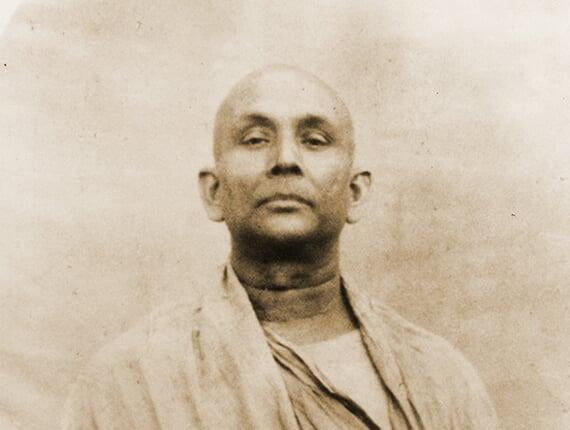
Swami Turiyananda (1863-1922)
The name `Swami Premananda' given to Baburam by Swami Vivekananda at the time of accepting the monastic orders, was a true reflection of his basic trait universal love. Born to affluent parents on December 10, 1861, Baburam completed his early schooling in his village of Antpur (Bengal), came to Calcutta for higher education and joined the Metropolitan Institution. There he had the privilege of having Sri `M' ( Mahendranath Gupta ), the celebrated author of The Gospel of Sri Ramakrishna as his Headmaster and Rakhal ( Swami Brahmananda) as his class-mate. It was the latter who was instrumental in taking Baburam to Sri Ramakrishna. Sri Ramakrishna examined Baburam's features in his own, rather queer, way and was satisfied about his high spiritual potentialities. Increased contacts with Sri Ramakrishna intensified Baburam's inherent spiritual thirst which had been manifesting itself even from his childhood. After the passing away of Sri Ramakrishna, Baburam, along with his brother-disciples like Narendranath ( Swami Vivekananda ) and Rakhal embrace the monastic life, becoming `Swami Premananda.' He spent most of his life in the monasteries at Baranagore, Alambazar and Belur taking care of worship, internal management and training of the new monastic recruits. His innate motherly love endeared him to one and all. Many a young man was reformed by his golden touch. During his later sojourn in several parts of Bengal, especially in East Bengal ( present Bangladesh ), he inspired the youth to be useful to the society by voluntary service. Though a man of high spiritual attainments, he was wont to hiding them and very reticent in giving expression to them. The deadly disease of Kala Azar took him on the 30th July 1918.
Teachings
- To follow the Master means to practise what he taught; otherwise nobody can advance by just offering to him a few flowers or through some momentary sentimental outbursts.
- Can one become a great devotee of God simply by dancing and jumping or by quoting plentifully from the scriptures? What is wanted is freedom from selfishness - freedom from egotism... Mere talk will not do, this is an age of action.
- Not mere theory; actualize it - there has been enough talk and writing. Put the books aside and let your actions speak. This is what the lives of the Master and Swamiji stand for.
- The poor, the weak, the fallen, the ignorant - all these you have to make your own. And yet I warn you, that in loving one section of society you must not become hateful of the other, the rich.
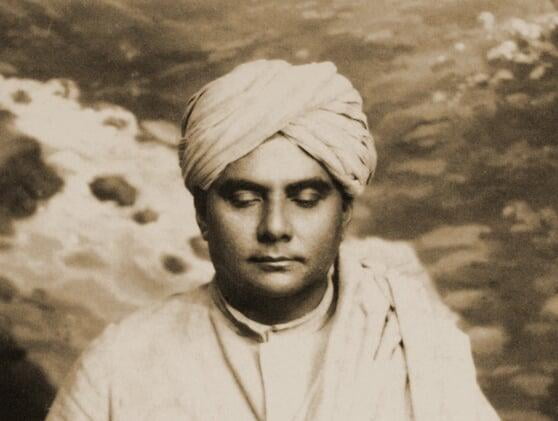
Swami Abhedananda (1866-1939)
Swami Vivekananda once declared that Latu ( the premonastic name of Swami Adbhutananda ) was the greatest miracle of Sri Ramakrishna. If an orphan servant boy who had absolutely no knowledge of even the alphabets could rise to such a state of sainthood that the scholars of great book-learning would sit at his feet and listen spellbound to his words of wisdom, it was nothing short of a miracle that Sri Ramakrishna brought about. Hence the appropriateness of his name ( adbhuta = wonder ).The early life of the Swami is shrouded in mystery. Born in a remote village of Bihar, and orphaned at a tender age, the boy was later brought to Calcutta by his uncle. Good fortune favored him by getting him the job of a servant in the house of Sri Ramachandra Datta, a great devotee of Sri Ramakrishna. The religious atmosphere in the house helped unfold his religious temperament.
The frequent errands to Dakshineswar brought him into close contact with Sri Ramakrishna who graciously accepted him as a disciple. Later on, as Sri Ramakrishna felt the need for an attendant, Latu started living with him and serving him. Since the guru was all in all for him, his service was exceptionally devoted. After the demise of the Master, Latu embraced monastic life and became `Swami Adbhutananda.' Though he lived a mendicant's life, he seldom moved away from Dakshineswar, his holiest place of pilgrimage. Through hard austerity and long bouts of meditation he was able to live constantly in God. He lived for an unusually long period of nine years at the house of Balram Bose, another great devotee of Sri Ramakrishna. It was during this period that many earnest seekers would meet him and get their doubts resolved. He spent his last days at Varanasi where he breathed his last on April 24, 1920.
Teachings
- If you desire to have firm and unshakable faith and devotion to the Lord, you should also take to tapasya, hard austerities. Tapasya does not mean aimless wandering hither and thither, it really means regular and steadfast japa, meditation and self-control.
- Why should you be afraid of doing work? if the mind is not purified by work, one cannot attain true knowledge. Wherever you go with your little mind. the mind will also accompany you and abide with you.

Swami Adbhutananda (d-1920)
Swami Vivekananda once declared that Latu ( the premonastic name of Swami Adbhutananda ) was the greatest miracle of Sri Ramakrishna. If an orphan servant boy who had absolutely no knowledge of even the alphabets could rise to such a state of sainthood that the scholars of great book-learning would sit at his feet and listen spellbound to his words of wisdom, it was nothing short of a miracle that Sri Ramakrishna brought about. Hence the appropriateness of his name ( adbhuta = wonder ).The early life of the Swami is shrouded in mystery. Born in a remote village of Bihar, and orphaned at a tender age, the boy was later brought to Calcutta by his uncle. Good fortune favored him by getting him the job of a servant in the house of Sri Ramachandra Datta, a great devotee of Sri Ramakrishna. The religious atmosphere in the house helped unfold his religious temperament.
The frequent errands to Dakshineswar brought him into close contact with Sri Ramakrishna who graciously accepted him as a disciple. Later on, as Sri Ramakrishna felt the need for an attendant, Latu started living with him and serving him. Since the guru was all in all for him, his service was exceptionally devoted. After the demise of the Master, Latu embraced monastic life and became `Swami Adbhutananda.' Though he lived a mendicant's life, he seldom moved away from Dakshineswar, his holiest place of pilgrimage. Through hard austerity and long bouts of meditation he was able to live constantly in God. He lived for an unusually long period of nine years at the house of Balram Bose, another great devotee of Sri Ramakrishna. It was during this period that many earnest seekers would meet him and get their doubts resolved. He spent his last days at Varanasi where he breathed his last on April 24, 1920.
Teachings
- What is the use of prayer and meditation if you have no dependence on Him ? Everything else is useless if you lack this.
- It is a great sin to find fault with others. You will invariably find that it is such people as never do a good act themselves who easily see defects in others and energetically spread rumors.
- It is better to continue calling on the Lord devotedly than to know, speak, and preach thousand and one religious cants and shibboleths.

Swami Trigunatitananda (1865-1914)
The depression brought about by the loss of a gold watch led the young Sarada Prasanna to Dakshineswar seeking peace. Master Mahashaya, the celebrated author of The Gospel of Sri Ramakrishna who was his teacher, led him to his future guru. The first visit itself forged strong links between the them. Fearing that his religious inclination and frequent visits to the Saint of Dakshineswar might ultimately induce him to become a monk, his relatives tried hard to change his mind, taking recourse to, in the process, religious rites and charms.But nothing worked. And, Sarada Prasanna became `Swami Trigunatitananda'.
The Swami had a strong constitution and was a dare-devil.During his itinerant days, he had often been on the brink of disaster and was miraculously saved. It is said that he once underwent surgery for fistula without anesthetics. He never cared for his personal comforts but was eager to serve others. The famous relief work he organized at Dinajpur (now in Bangladesh) bears testimony to this. At the behest of Swami Vivekananda, Swami Trigunatitananda started the Udbodhan, the Bengal Monthly of the Ramakrishna Order, and assiduously built it up. When Swami Turiyananda returned back to India from San Francisco, it was Trigunatitananda who was entrusted with the responsibility of organizing the Vedanta work there. It was he who built the first Hindu Temple in the West. The great life came to an abrupt end as a result of a mad man's act of throwing a bomb. He breathed his last on 10th January 1914.
Teachings
- People talk of finding out the proper kind of guru. But that is not a reasonable position in all cases. Whoever the guru may be, everything will progress nicely if the disciple is earnest and sincere.
- People of all castes can be initiated by a good guru who has attained perfection. What caste can a true devotee or the perfect soul have? When the individual soul merges in God (like rivers in the sea), they can no more have any individuality. So how can there be then, the distinction of caste, as Brahmin, Shudra etc., belonging to the body and never to the soul?
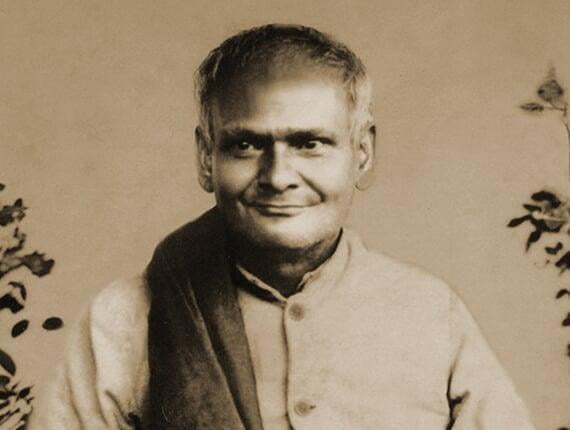
Swami Subodhananda (1867-1932)
At the behest of Swami Vivekananda, but most reluctantly, Swami Subodhananda rose to speak before a gathering of monks and novices of the Math. And lo! There was an earth-quake! (It was the earth-quake of 1897) It was really an earth-shaking speech!Whether the speech was `earth-shaking' or not, the Swami could certainly help even the lowliest in spirits, to shake off his dejection.He was a wonderful combination of compassion, love, childlike simplicity and profound spiritual wisdom. His premonastic name was Subodh Chandra Ghosh. He was born in Calcutta on the 8th November 1867. His parents were deeply religious by nature which automatically left its influence on the son also. Coming to know of Sri Ramakrishna through a Bengali book of his teachings, Subodh lost no time in meeting the Saint of Dakshineswar. Even during the first two visits, Sri Ramakrishna gauged the spiritual potential of the boy and put him into a deep meditation by mystic methods.
Subodh joined the Baranagore monastery along with the other disciples of the Master and got the name `Swami Subodhananda' after ordination. Because of his simple and childlike nature, he was endearingly called `Khoka Maharaj' ( khoka = child ) by his monastic brothers. After much austerities and itinerant life, the Swami settled down to a life of service to the suffering humanity. He was very actively associated with many of the relief works of the Ramakrishna Mission. He was extremely liberal in the matter of initiation also, especially towards the weaker sections of the society, whom he tried to help in all possible ways. The Swami passed away on the 2nd December 1932.
Teachings
- Before the Lord enters the temple of anyone of His children's hearts, he fills it with devotion, faith and love, just as a king sends different pieces of furniture and vessels to a subject's house which he intends to visit. Else, where can the poor subject get all those things? The Lord grants devotion, faith and love, just because He will come.
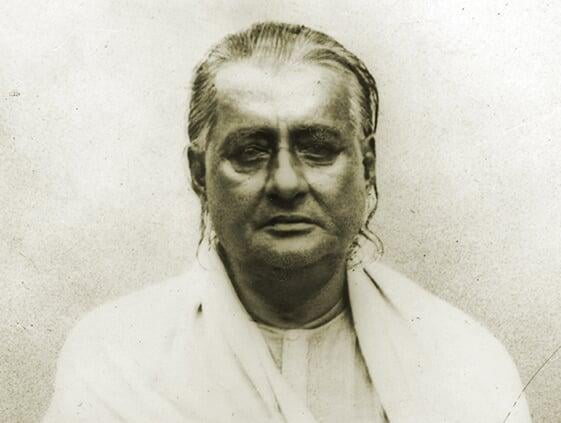
Swami Akhandananda (1864-1937)
'I do not covet earthly kingdom, or heaven, or even salvation. The only thing I desire is the removal of the miseries of the afflicted!' If these words of Prahlada, the great devotee, could be found truly reflected in anyone's life, it was in the life of Swami Akhandananda, the third President of the Ramakrishna Order. The Swami, known as Gangadhar Ghatak before ordination into Sannyasa, was born on the 30th September 1864 in Calcutta.Even in his boyhood days Gangadhar was deeply religious and orthodox to the point of being dubbed as `oldish' even by Sri Ramakrishna himself! As a corrective measure Sri Ramakrishna introduced him to Narendranath (Swami Vivekananda) who was, for all.
After the demise of the Master, Gangadhar, who took monastic orders and became `Swami Akhandananda', led the unfettered life of a wandering monk. For three years he roamed in the Himalayas and visited Tibet also three times. Because of his experience in the Himalayas, Swami Vivekananda took him as his guide in his sojourn there. Swami Vivekananda's burning words to do something for the poor and illiterate masses, inspired Swami Akhandananda to do some good work for the education of poor children both in Khetri and in Udaipur. Finally he started an orphanage at the village of Sargacchi in the Murshidabad district of Bengal to where he had gone to conduct famine relief work. He and the institution grew up with each other.
On the death of Swami Shivananda, Swami Akhandananda was elected as the third President of the Ramakrishna Order. The Swami had a flair for learning languages, which brought him into intimate contact with the people wherever he went. His childlike simplicity endeared him to one and all. His austerity and scholarship were a source of inspiration for many. He breathed his last on February 7, 1937.
Teachings
- The spiritual path for the present age lies through the harmony of all paths of earlier ages -- harmony of knowledge, devotion and selfless work. We must have knowledge, devotion and service. It won't do to have only one.
- In this age of Kali, one thing that counts is the Lord's name. Go on repeating His name. ..Just repeat His name for a hundred and eight times; that will bear fruit in time. Try to increase the number slowly.
- No work should be considered degrading. All works are His. Swamiji himself scourged the vessels. When you sweep the floor or dress vegetables, think that you are doing His work.
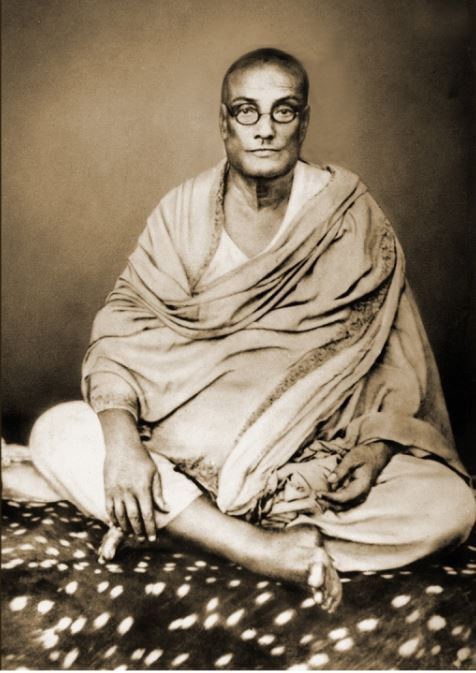
Swami Vijnananda (1868-1938)
Sri Ramakrishna one day challenged a young man to wrestle with him. The tall and hefty youth put him down in no time. And the wonder of wonders: The young man soon felt a power entering from Sri Ramakrishna's body into his own, making him completely powerless! This was how Hariprasanna had one of his early encounters with the Master.Born on the 28th October 1868 in a respectable Brahmin family at Belgharia (Calcutta), Hariprasanna Chattopadhyaya (the pre-monastic name of Swami Vijnanananda) received a good education from his parents. He became an engineer and rose to the position of District Engineer in the erstwhile State of United Provinces, before renouncing the world. From his very first visit, Sri Ramakrishna spotted him out as one belonging to the inner circle and a future monk. He took particular care to instill in him the ideal of brahmacharya or celibacy. His visits to Dakshineswar and contact with the Master laid a firm foundation for his spiritual life. When the Master passed away, Hariprasanna who was still a student at Patna, had a strange vision in which he saw Sri Ramakrishna as if in flesh and blood, standing before him. Since he had lost his father at early age and had to support his mother, he was obliged to take to government service, but kept in touch with the disciples of the Master, especially Narendra (Swami Vivekananda). Later -- in 1896, to be more precise -- he gave up the world and joined the Math then at Alambazar, and became `Swami Vijnanananda' after ordination.
Since he was an engineer with good experience in building construction, he was entrusted by Swami Vivekananda himself with the task of building the Math campus as also preparing suitable plans for a memorial temple of Sri Ramakrishna. So he prepared it in consultation with a noted European architect of Calcutta and Swamiji approved of the same. Due to the sudden demise of Swamiji and lack of funds, the project had to wait for a long time to be taken up. It was completed and dedicated by Swami Vijnanananda himself on the 14th of January 1938. A group of young men in Allahabad had formed themselves into an association called `Brahmavadin Club' with a view to uplift themselves morally and spiritually. They had done so under the inspiration of a devotee of Sri Ramakrishna. This devotee had left Allahabad in 1900. As luck would have it, Swami Vijnanananda arrived at Allahabad in the same year as a wandering monk. The young men who were delighted to have a disciple of Sri Ramakrishna amongst them requested the Swami to live in the rented premises of their Club and guide them. The Swami agrees and lived there for nearly ten years, spending most of his time in austerity and study. He later on established a permanent branch of the Ramakrishna Math at Allahabad in 1910. The Swami was a great scholar, not only in Sanskrit and religio-philosophical works but also in astronomy and astrology. He was elected the President of the Ramakrishna Order in 1937 after the demise of Swami Akhandananda. He strove hard to complete the construction of the temple of Sri Ramakrishna at Belur Math, which he successfully did and dedicated in January 1938 as already indicated. He then returned to Allahabad and passed away on the 25th April the same year. The body was consigned to the sacred waters of the Triveni, at the confluence of the rivers Ganga and Yamuna, and the invisible Saraswati.
Teachings
- One should not ask for anything from God, but remain satisfied with whatever He is pleased to give. If you ask for anything He will give a gift which is like a double-edged sword. Real welfare lies in using things properly; wrong use of things brings misfortune.
- Whatever situation one may be in, one can, to some degree, server the motherland, serve the common people, and above all, sever God. Always have the good of the universe at heart and let this become a part of your daily prayer.
- One reason for the decadence of our country is that in the name of religion, people put forward harmful theories, as a result of which, people lose their faith in religion itself. Simplicity, faithfulness and purity of heart are called for.
- One who can detach his mind from material things will see the light of God and his presence in everything. Worldly attachment draws people away from God and scorch them in the wild fire of the world.
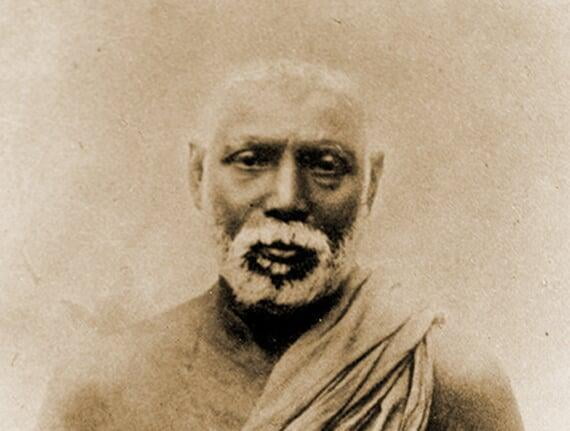
Swami Advaitananda (1828-1909)
The darkness of a crisis in life often acts like the twilight before dawn leading to the effulgence of the sun. When Gopal Chandra Ghosh of Sinthi (Calcutta) lost his wife and was heart broken, that very grief led him to Sri Ramakrishna, seeking relief. The contact thus established through a crisis ultimately led to glorious spiritual heights. Gopalda -- as he was endearingly called -- was older than even Sri Ramakrishna. Nevertheless, the attitude of reverence and devotion he cherished towards Sri Ramakrishna, his guru, was unflinching. It was his good luck that made him instrumental in the birth of the future Ramakrishna Order of monks by gifting a few pieces of ochre-colored cloths to Sri Ramakrishna who personally distributed them among Narendra, Rakhal and others including Gopal himself, during his last days at Cossipore. Along with Tarak (Swami Shivananda), Gopalda was the first to join the Baranagore monastery after the departure of the Master from this world.
The monastic name given to him was `Swami Advaitananda'. He spent a few years at the monastery, shifted to Varanasi for about five years and returned to the newly established Math at Alambazar, and later at Belur. His advanced age prevented him from taking active part in the missionary activities of the new organization. His personal cleanliness, neat and methodical ways of doing any work, has been admired even by Sri Ramakrishna. The Swami passed away on the 28th December 1909 at the ripe old age of eighty-one.
